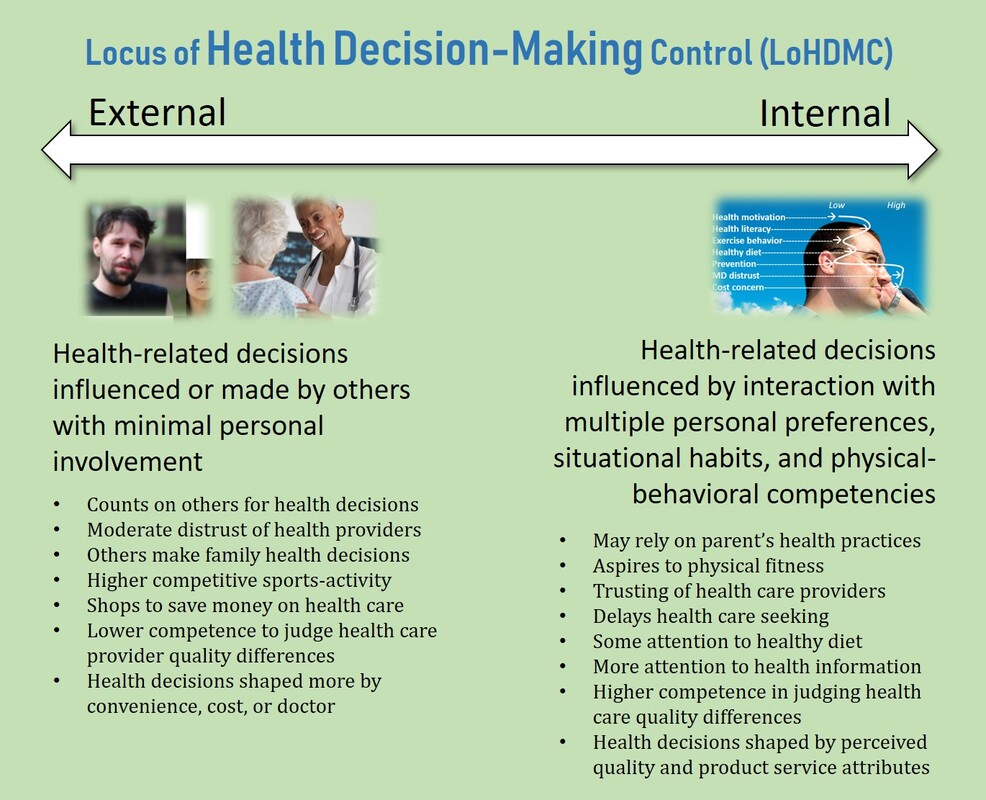The locus of health decision-making control is determined by who is making decisions: the person or someone else. When someone else is in control the locus is external. When health decision-making is in the hands of the person the locus is internal.
The locus of health decision-making control is not limited to choice of doctor, choice of hospital, or choice of health insurance. Health decision-making is shaped by habits, preferences and physical capabilities most often reflected in past behavior.
Complex health decision-making most often occurs non-consciously. Favored behavioral routines are primed by environmental and social cues without the need for time consuming deliberation.
These favored behavioral routines influence decisions as basic as paying attention or tuning out a health communication, the decision to seek heath care, the decision to fill a prescription, the decision to take the prescription as directed.
When a person takes on control of health decision-making an increasing number of highly motivated adaptive health preferences emerge. These "prime directives" increase the complexity of decision-making moving it into non-conscious levels.
Complex health decision-making most often occurs non-consciously. Favored behavioral routines are primed by environmental and social cues without the need for time consuming deliberation.
These favored behavioral routines influence decisions as basic as paying attention or tuning out a health communication, the decision to seek heath care, the decision to fill a prescription, the decision to take the prescription as directed.
When a person takes on control of health decision-making an increasing number of highly motivated adaptive health preferences emerge. These "prime directives" increase the complexity of decision-making moving it into non-conscious levels.
Locus of Health decision-making control and
The adaptive patterns stage
These interactions complicate health decision-making, forcing the individual to unconsciously adopt a default pattern optimized for balancing internal preferences against situational adaptive necessities. This is the Adaptive Patterns stage.
Relevance: Marketing communications, engagement, or behavior change interventions optimally tailored to an adult's health adaptive pattern, representing intrinsically-goal-directed motivations, will generate greater success than one-size-fits-all alternatives.

